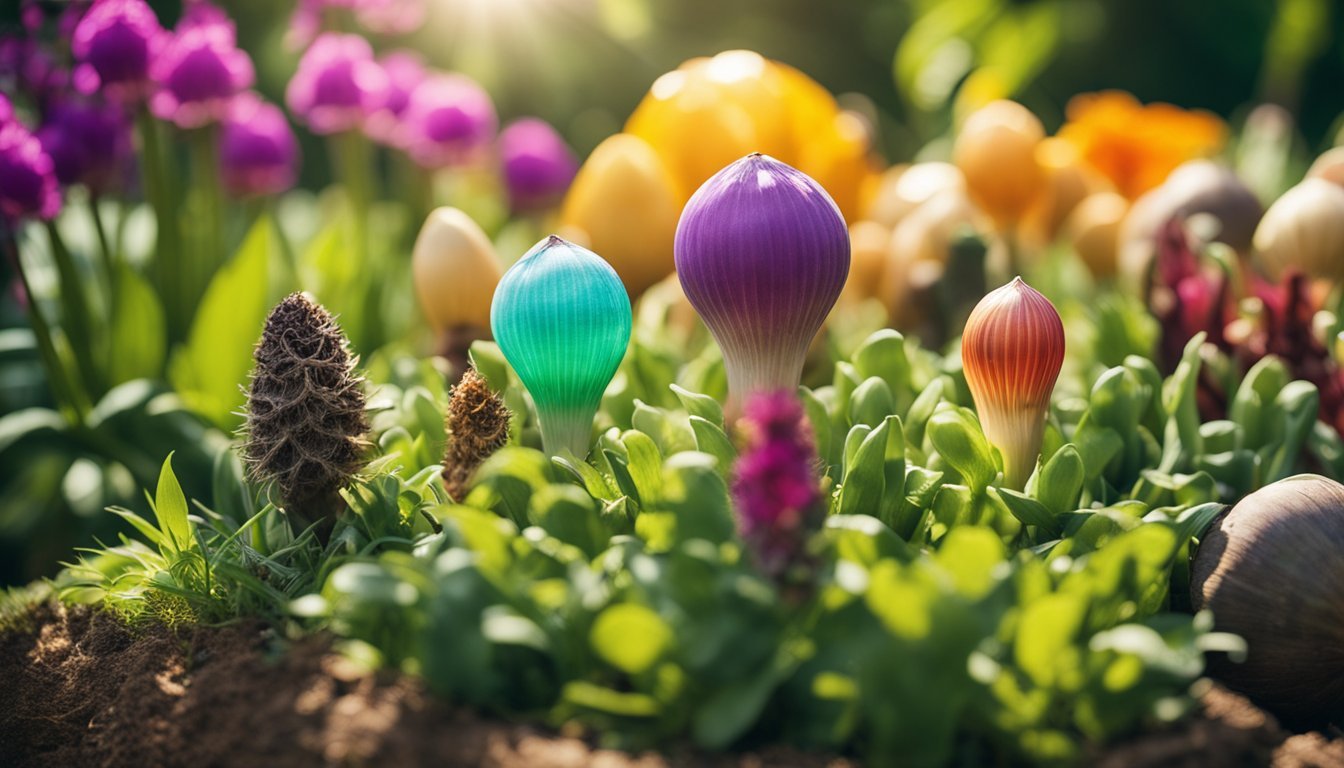
Gardening can be a delightful hobby, yet it can also introduce a host of complex terminology, especially when it comes to the various types of underground storage organs.
Terms like bulbs, corms, rhizomes, and tubers are often tossed around interchangeably, but each has its own unique role in the life cycle of a plant.
These structures not only help anchor plants in the soil but also serve as vital reservoirs for nutrients that nourish new roots and shoots.
An Overview of Underground Storage Organs
The term “bulbs” refers to a diverse range of geophytes—plants that boast specialized subterranean structures to store nutrients.
This group includes true bulbs, corms, fleshy roots, rhizomes, tubers, and tuberous roots, each with its distinctive shape and function.
Plants such as crocuses and peonies fall under this umbrella, showcasing the incredible variety of life that utilizes these underground reservoirs.
These organs not only contain the genetic information needed for growth—including roots, leaves, and flower shoots—but they also offer protection against harsh weather, herbivores, and dry conditions.
True Bulbs
True bulbs are often rounded or teardrop-shaped and primarily made up of specialized leaf tissue, referred to as scales.
If you slice a true bulb in half, you’ll see concentric rings formed by these scales surrounding a central growth point, much like an onion.
Besides scales, true bulbs feature a basal plate, from which the roots grow, and a growing tip that develops into leaves and flowers.
For optimal growth, plant true bulbs at a depth that’s two to four times their height, ensuring the roots are directed downward.
Corms
Corms, unlike true bulbs, are compact, rounded structures that may appear slightly knobby or even flattened.
Classified as modified stem bases, corms serve primarily for sugar storage and lack the layered scales typical of true bulbs.
Instead, they are shielded by a papery outer layer and come equipped with a basal plate.
When planting corms, it’s important to position the basal plate facing downwards, just like true bulbs.
Classic flowering plants such as liatris and autumn crocus belong to the corm category.
Fleshy Roots
Fleshy roots represent modified tap roots that have developed into plump nutrient reservoirs.
These roots typically take on a swollen or elongated shape and feature a cap where the stems are attached, along with fine roots extending downwards.
The resilience of plants with fleshy roots can greatly vary depending on the species.
Rhizomes are stout stems that grow horizontally, either just under or along the surface of the soil.
These structures serve as both storage organs and a means of vegetative reproduction, allowing the plant to spread over time.
Some popular garden favorites with rhizomes include canna, ginger, and hosta.
Both tubers and tuberous roots are fleshy and well-suited for water and nutrient storage, covered by a thin protective skin.
Tubers can be cut into sections for propagation, while tuberous roots often contain both tubers and sections of the crown.
Potatoes and caladiums are prime examples of tubers that are widely cultivated.
The Allure of Geophytes
Many geophytes, including true bulbs, corms, and tubers, require a dormancy period following their flowering phase.
For those in cooler regions, this often means lifting and storing bulbs throughout the winter months.
By understanding the unique characteristics of these varied underground storage organs, gardeners can cultivate healthy, thriving plants that produce impressive blooms year after year.
What types of underground storage organs are flourishing in your own garden? Feel free to share your experiences in the comments below!
Source: Gardenerspath.com

